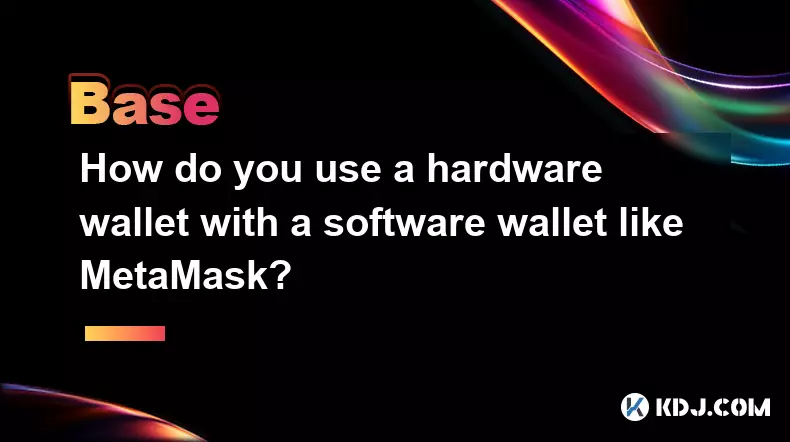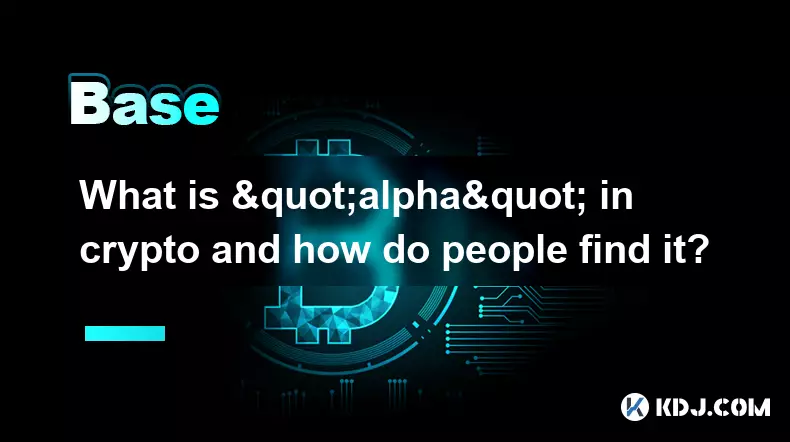-
 bitcoin
bitcoin $102877.190955 USD
1.88% -
 ethereum
ethereum $3430.435064 USD
4.52% -
 tether
tether $0.999264 USD
-0.05% -
 xrp
xrp $2.307310 USD
4.49% -
 bnb
bnb $987.740692 USD
3.82% -
 solana
solana $161.947760 USD
3.97% -
 usd-coin
usd-coin $0.999712 USD
-0.05% -
 tron
tron $0.292810 USD
2.93% -
 dogecoin
dogecoin $0.179738 USD
10.70% -
 cardano
cardano $0.580716 USD
8.75% -
 hyperliquid
hyperliquid $42.463448 USD
8.40% -
 chainlink
chainlink $15.763437 USD
7.05% -
 zcash
zcash $649.595636 USD
17.21% -
 bitcoin-cash
bitcoin-cash $511.610261 USD
7.19% -
 stellar
stellar $0.292537 USD
7.91%
What is a crypto lending platform and how does it generate interest?
Crypto lending platforms let users earn interest by lending digital assets, using smart contracts or centralized systems to connect lenders with borrowers.
Nov 08, 2025 at 09:19 pm

What Is a Crypto Lending Platform?
1. A crypto lending platform is a digital service that allows users to lend their cryptocurrency holdings to borrowers in exchange for interest payments. These platforms operate on blockchain technology and often function within the decentralized finance (DeFi) ecosystem, though some are centralized entities regulated under traditional financial frameworks.
2. Users deposit their digital assets—such as Bitcoin, Ethereum, or stablecoins like USDT or DAI—into smart contracts or custodial wallets managed by the platform. In return, they receive periodic interest, typically paid out in the same cryptocurrency or sometimes in a native platform token.
3. Borrowers, on the other hand, can access liquidity by providing collateral, usually in the form of other cryptocurrencies. This collateral is often overvalued relative to the loan amount to mitigate risks associated with price volatility.
4. The mechanism operates similarly to traditional banking, where deposits fund loans, but without intermediaries like banks. Instead, algorithms and smart contracts govern loan issuance, interest distribution, and liquidation processes when collateral values drop below required thresholds.
5. These platforms appeal to investors seeking yield on otherwise idle crypto assets, especially in environments where traditional savings accounts offer minimal returns.
How Do Crypto Lending Platforms Generate Interest?
1. The primary source of interest generation comes from the spread between what borrowers pay and what lenders receive. When a borrower takes out a loan, they agree to repay the principal plus an interest rate determined by supply and demand dynamics or fixed by the platform.
2. Platforms use automated market-making models or algorithmic risk assessment tools to set competitive borrowing rates. Higher-risk loans may require more collateral or carry elevated interest charges, which contribute to higher yields for lenders.
3. Some platforms deploy deposited funds into additional yield-generating strategies such as staking, liquidity provision in decentralized exchanges, or participation in DeFi protocols. These secondary activities amplify the returns available to distribute back to lenders.
4. Centralized platforms may also engage in proprietary trading or asset management using aggregated user funds, although this introduces counterparty risk and depends heavily on the platform’s operational transparency.
5. Smart contract-based platforms ensure that all transactions are recorded on-chain, enabling verifiable audits of fund flows and interest disbursement schedules, enhancing trust among participants.
Risks Involved in Crypto Lending
1. One major concern is smart contract vulnerability. Bugs or exploits in code can lead to loss of funds, as seen in several high-profile hacks across various DeFi platforms.
2. Market volatility poses another significant threat. Since most loans are over-collateralized in crypto assets, sharp price drops can trigger mass liquidations, potentially overwhelming the system during flash crashes.
3. Regulatory uncertainty affects many platforms, particularly those operating across borders. Changes in legislation could restrict operations or classify tokens as securities, impacting payout structures and accessibility.
4. Counterparty risk remains relevant, especially on centralized platforms where users do not control private keys. If the platform becomes insolvent or mismanages funds, lenders may lose their investments.
5. Impermanent loss may affect those whose deposits are used in liquidity pools, reducing effective returns even if nominal interest appears high.
Common Questions About Crypto Lending Platforms
How are interest rates determined on crypto lending platforms?Interest rates are influenced by real-time supply and demand. When many users want to borrow a specific asset, rates rise. Conversely, when there's abundant supply of lenders, rates decrease. Algorithms adjust these rates dynamically to balance the market.
Can I withdraw my crypto at any time?Most platforms allow withdrawals, but some enforce lock-up periods or charge early withdrawal penalties. In DeFi protocols, instant withdrawal depends on liquidity availability within the pool.
What happens if a borrower defaults?If a borrower fails to maintain sufficient collateral value, the platform automatically liquidates their position. The collateral is sold to repay lenders, often with a liquidation bonus incentivizing third parties to execute the process quickly.
Are earnings from crypto lending taxable?In many jurisdictions, interest earned from crypto lending is treated as taxable income. Users must report these gains according to local tax laws, typically at the time of receipt in fiat-equivalent value.
Disclaimer:info@kdj.com
The information provided is not trading advice. kdj.com does not assume any responsibility for any investments made based on the information provided in this article. Cryptocurrencies are highly volatile and it is highly recommended that you invest with caution after thorough research!
If you believe that the content used on this website infringes your copyright, please contact us immediately (info@kdj.com) and we will delete it promptly.
- Ripple (XRP) in 2026: Hold or Fold? A Look at XRP's Future and Emerging DeFi Alternatives
- 2025-11-08 18:35:01
- Zcash ZEC Coin Price Explosion: From Privacy Niche to Center Stage
- 2025-11-08 18:55:01
- Berachain Price Prediction: Navigating the Honeycomb Hype in Crypto
- 2025-11-08 18:55:01
- Arthur Hayes, Gold, and Bitcoin: A Modern Monetary Trinity?
- 2025-11-08 19:15:01
- Shiba Inu's Next Move: Navigating a Shifting Market
- 2025-11-08 19:20:01
- Pakistan's Crypto Crossroads: Balancing Opportunity with Asset-Backed Realities
- 2025-11-08 19:20:01
Related knowledge

How does a crypto insurance protocol work?
Nov 08,2025 at 12:39am
Understanding Crypto Insurance Protocols1. A crypto insurance protocol operates by offering financial protection against losses incurred from digital ...

What is an "exploit" versus a "hack" in the context of smart contracts?
Nov 09,2025 at 12:40am
Understanding Exploits in Smart Contracts1. An exploit refers to the utilization of a known vulnerability within a smart contract’s code to gain unint...

What is a decentralized storage network and how does it compare to cloud services?
Nov 07,2025 at 11:59pm
Understanding Decentralized Storage Networks1. A decentralized storage network distributes data across a peer-to-peer infrastructure rather than relyi...

How do you use a hardware wallet with a software wallet like MetaMask?
Nov 09,2025 at 04:20am
Connecting a Hardware Wallet to MetaMask1. Ensure your hardware wallet is updated with the latest firmware. Devices like Ledger or Trezor require up-t...

What is a factory contract and how is it used to deploy other contracts?
Nov 08,2025 at 04:20am
Understanding Factory Contracts in Blockchain Development1. A factory contract is a smart contract designed to create and deploy other smart contracts...

What is "alpha" in crypto and how do people find it?
Nov 08,2025 at 06:19pm
Understanding Alpha in the Cryptocurrency Space1. In the context of cryptocurrency, 'alpha' refers to valuable, non-public information or insights tha...

How does a crypto insurance protocol work?
Nov 08,2025 at 12:39am
Understanding Crypto Insurance Protocols1. A crypto insurance protocol operates by offering financial protection against losses incurred from digital ...

What is an "exploit" versus a "hack" in the context of smart contracts?
Nov 09,2025 at 12:40am
Understanding Exploits in Smart Contracts1. An exploit refers to the utilization of a known vulnerability within a smart contract’s code to gain unint...

What is a decentralized storage network and how does it compare to cloud services?
Nov 07,2025 at 11:59pm
Understanding Decentralized Storage Networks1. A decentralized storage network distributes data across a peer-to-peer infrastructure rather than relyi...

How do you use a hardware wallet with a software wallet like MetaMask?
Nov 09,2025 at 04:20am
Connecting a Hardware Wallet to MetaMask1. Ensure your hardware wallet is updated with the latest firmware. Devices like Ledger or Trezor require up-t...

What is a factory contract and how is it used to deploy other contracts?
Nov 08,2025 at 04:20am
Understanding Factory Contracts in Blockchain Development1. A factory contract is a smart contract designed to create and deploy other smart contracts...

What is "alpha" in crypto and how do people find it?
Nov 08,2025 at 06:19pm
Understanding Alpha in the Cryptocurrency Space1. In the context of cryptocurrency, 'alpha' refers to valuable, non-public information or insights tha...
See all articles





















![The Graph Price Prediction [GRT Crypto Price News Today] The Graph Price Prediction [GRT Crypto Price News Today]](/uploads/2025/11/07/cryptocurrencies-news/videos/690d4df44fe69_image_500_375.webp)



















































